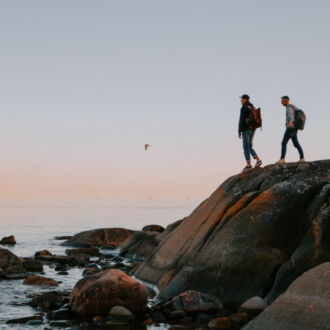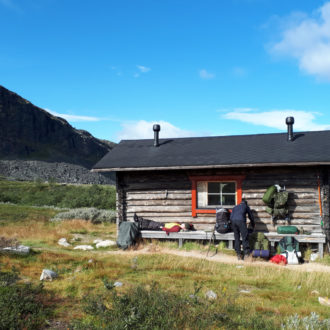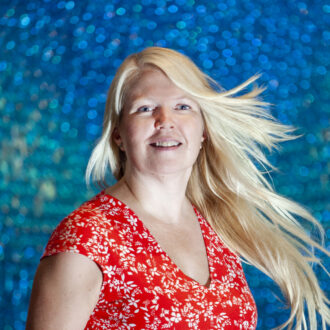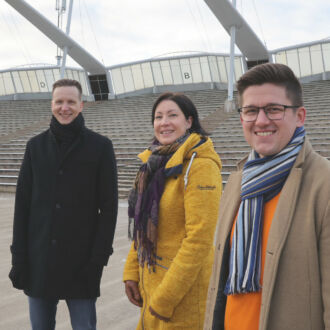It’s a brisk January morning in the Finnish city of Rovaniemi, the provincial capital of Lapland, located on the Arctic Circle. The sun is hovering below the horizon – later it will peep over the edge for a mere hour or so.
On their way to work, people are pausing to admire another source of reflected light emanating from the space in front of Rovaniemi City Library and the concert and conference centre Lappia Hall. This eerie purple-pink glow has an otherworldly alien aura, but it issues from a plentiful and familiar local material: snow.
Showroom in a snow room
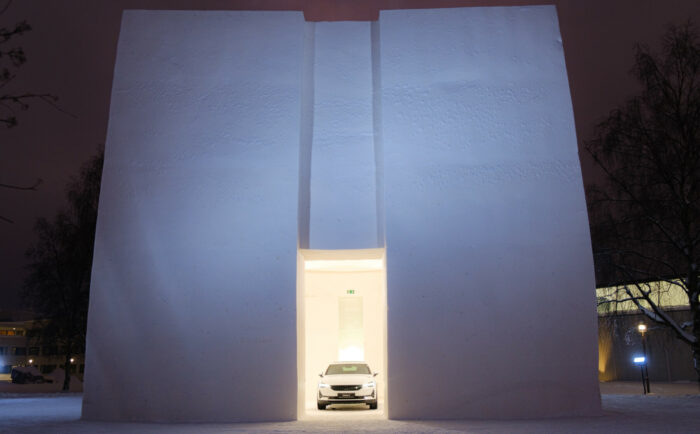
The Polestar Snow Space displays the Polestar electric car brand and forms part of the preprogram of the Arctic Design Week in the northern Finnish city of Rovaniemi.Photo: Tim Bird
The Polestar Snow Space, completed in January 2023, is an elegant, 12-metre-tall white cube constructed from 3,000 cubic metres of compacted snow by a company called Frozen Innovations.
With a seven-week lifespan and a brightly illuminated, temple-like central chamber, it was conceived as a showroom for the Polestar electric car brand and as a novel venue for meetings and events. The structure is also part of the lead-up to the Rovaniemi Arctic Design Week in March.
“Snow is our local material,” says Taina Torvald, producer of the Design Week, which is a partner in the Snow Space venture. “Lapland is known for its snow castles, hotels and igloos, all of them popular and exciting for visitors, but this is something all local people can visit and enjoy.” The location is appropriate; Lappia Hall and the library are architectural landmarks by Finland’s most celebrated designer, Alvar Aalto (1898–1976; February 3, 2023 marks the 125th anniversary of his birthday).
Matching the pristine minimalist glow of the Polestar brand, snow was chosen for its cleanliness, sustainability and circular qualities (“circular” means the construction materials are recyclable or reusable). The snow was harvested locally, and after the structure is demolished, electric haulage vehicles will take it to the ski slopes of Ounasvaara, on the edge of the city.
Magical beauty
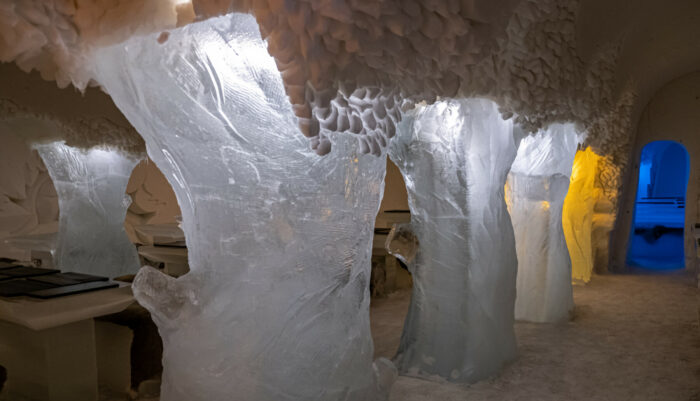
The restaurant and rooms at the Arctic Snow Hotel include ice sculptures, snow carvings and atmospheric lighting.Photo: Tim Bird
As a showroom, the Snow Space is the first of its kind, but the crafts of snow and ice design and architecture are established areas of expertise in Finland’s Arctic north. An annual manifestation of these skills occurs at the Arctic Snow Hotel & Glass Igloos resort, half an hour’s drive north of Rovaniemi.
The hotel designs change from year to year, but the magical beauty of the structure and interior is consistent, thanks in large part to the supervision of its founder, owner and managing director, Ville Haavikko, who also had a hand in constructing the Polestar Snow Space.
Haavikko’s expertise in this field of temporary but very functional architecture rests on academic foundations. A local boy, he enlisted in a land surveying course at Rovaniemi Polytechnic and noticed that he could earn required course points by attending the school’s class in snow and ice construction. Suddenly engrossed in this niche discipline, and inspired by the example of the Jukkasjärvi Ice Hotel in Sweden, he started planning his own snow building enterprise in 2007.
As cosy as ice

A bed made out of ice can be cosy when covered with warm blankets and quilts.Photo: Tim Bird
The 2022–23 version of the Arctic Snow Hotel – the season lasts from mid-December to the end of March – has a capacity for 62 guests in 20 rooms fitted with beds of ice covered with warm blankets and quilts. Multinational daytime visitors and overnight customers safely traverse a magical maze of snow tunnels and chambers. Frozen sculptures and snow carvings decorate the premises, with sheep in one room, dinosaurs in another and frogs and thrones of ice in yet another.
The restaurant, using exquisite snowflake-shaped ice “crockery,” is an especially dazzling creation resting on crystalline pillars, like a scene from some Tolkien fantasy. The Ice Bar serves drinks in glasses made of ice.
It’s a chilly environment, but the thermometer inside never drops below minus 5 degrees Celsius, even if it plummets – as it often does in these parts – to minus 30 outside. An annex houses two rows of individual snow saunas. As if by counterintuitive magic, they generate a steam heat of 80 degrees Celsius.
Fabulous winter creations
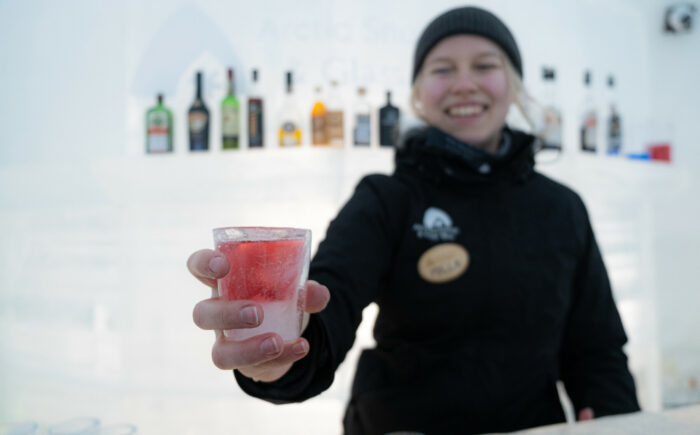
Would you like ice in that? A winter-clad server at the Arctic Snow Hotel holds out a cocktail in a glass made of ice. Photo: Tim Bird
“My passion is snow and ice construction,” Haavikko says. “We have invested 1.5 million euros in a workshop adjacent to the resort where we have the machines for handling and snow construction, as well as snow and ice storage.”
Few people in Finland can match Haavikko’s snow construction expertise and facilities, but fabulous winter creations are integral features of Lapland’s tourism offering. Other pioneers include the Lapland Hotels Snow Village at Lainio, near the ski resorts of Ylläs and Levi, and the snow chapel and igloos at Kakslauttanen, another resort even farther north.
South of Rovaniemi, the Snow Castle in the city of Kemi on the far-northern shores of the Baltic Sea is an annual attraction, combined with day cruises on a vintage icebreaker ship.
All of them are located remotely near lake, river or sea, which serve as ice sources and facilitate drainage. The negligible amount of light pollution makes it more likely that you can catch a view of the Northern Lights.
“Snow is a live material,” says Haavikko. “It wants to move. You have to understand how it behaves. When we combine snow and ice, that’s a different kind of behaviour. Ice is hard like a rock, but even the big ice blocks can bend under pressure. It’s actually quite flexible. There are dozens of things to consider, including temperature, air pressure, quality of the snow – wet or dry, how often it is handled. That’s what makes it interesting.”
By Tim Bird, February 2023
